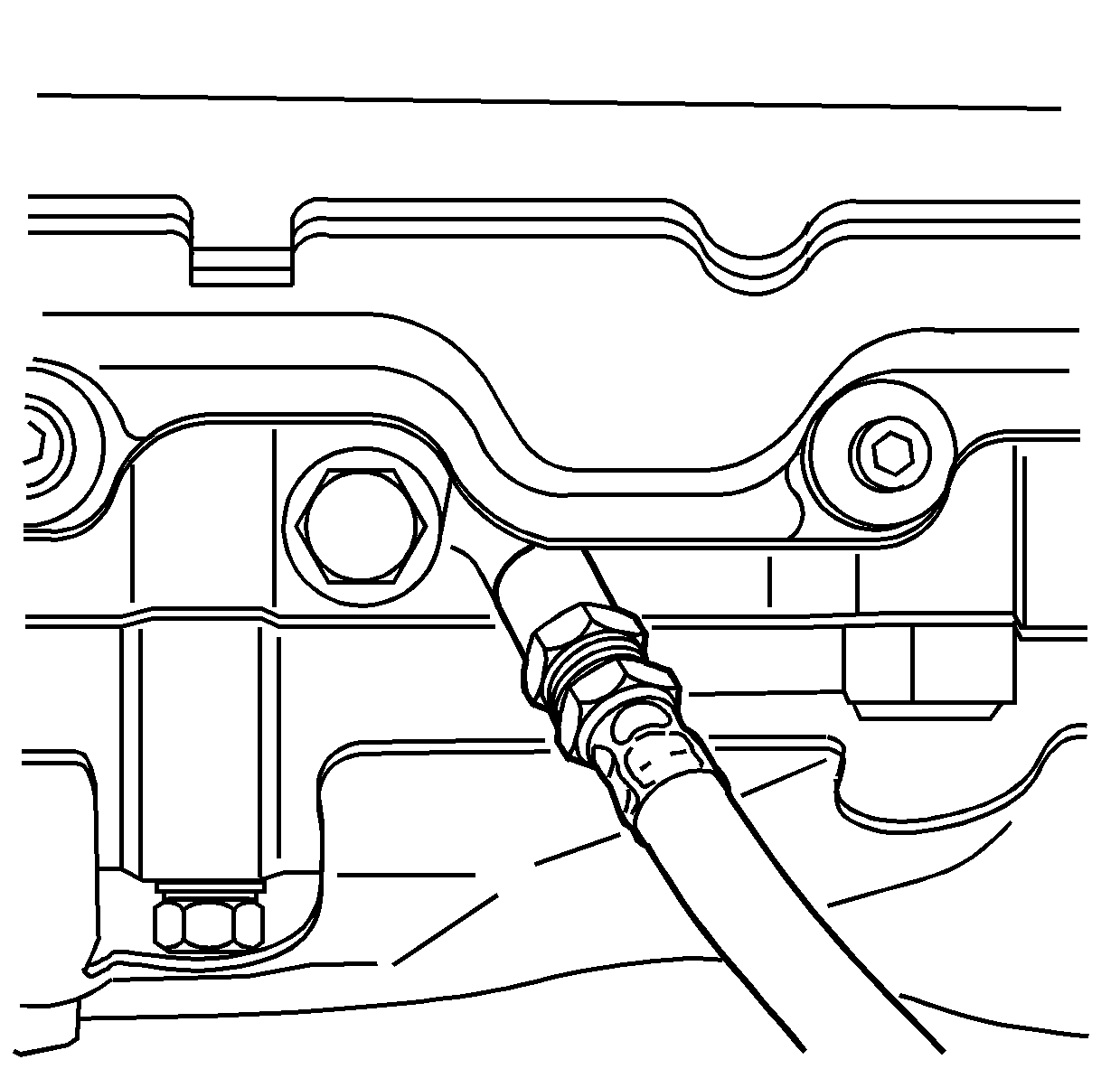Special Tools
| • | J 35667-A Cylinder Head Leakdown Tester |
| • | J-35667-8 Cylinder Head Leakdown Adapter |
For equivalent regional tools, refer to
Special Tools.
Warning: Refer to Battery Disconnect Warning in the Preface section.

Note: A leakage test may be performed to measure cylinder/combustion chamber leakage. High cylinder leakage may indicate one or more of the following:
| • | Worn, burnt, or stuck valves |
| • | Damaged valve train components |
| • | Worn or scored cylinder bore |
| • | Damaged cylinder head gasket |
| • | Cracked or damaged cylinder head |
| • | Cracked or damaged engine block |
- Disconnect the battery ground negative cable.
- Remove the glow plugs.
- Rotate the crankshaft to place the piston in the cylinder being tested at Top Dead Center (TDC) of the compression stroke.
- Install
J-35667-8 adapter
and
J 35667-A tester
.
Note: It may be necessary to hold the crankshaft balancer bolt to prevent the engine from rotating.
- Apply shop air pressure to
J 35667-A tester
and adjust according to the manufacturers instructions.
- Record the cylinder leakage value. Cylinder leakage that exceeds 25 percent is considered excessive and may require component service. In excessive leakage situations, inspect for the following conditions:
| • | Air leakage sounds at the intake manifold tube, may indicate a worn, stuck or burnt intake valve, broken valve spring, incorrect valve lash or damaged valve train components. |
| • | Air leakage sounds at the exhaust system tailpipe may indicate a worn, burnt, or stuck exhaust valve, broken valve spring, incorrect valve lash or damaged valve train components. |
| • | Air leakage sounds from the crankcase, oil level indicator tube, or oil fill tube may indicate worn piston rings, a damaged piston, a worn or scored cylinder bore, a damaged engine block or a damaged cylinder head. |
| • | Air bubbles in the cooling system may indicate a damaged cylinder head or gasket. |
- Perform the leakage test on the remaining cylinders and record the values.

